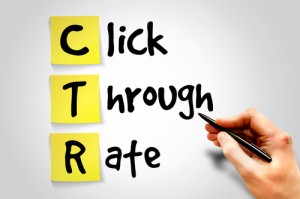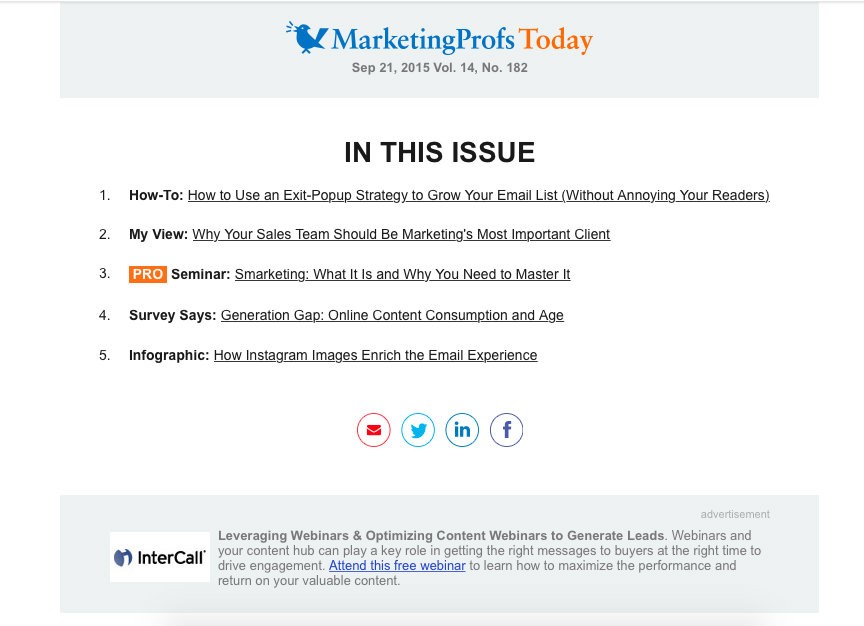 Email marketing, with ROI reaching 4,300% (Direct Marketing Association), is by no means an outdated tool in the era of social media and mobile apps. The rumors of its death are exaggerated! If you don’t believe them, see our tips on increasing CTR so that you can unlock the full potential of the channel.
Email marketing, with ROI reaching 4,300% (Direct Marketing Association), is by no means an outdated tool in the era of social media and mobile apps. The rumors of its death are exaggerated! If you don’t believe them, see our tips on increasing CTR so that you can unlock the full potential of the channel.
How to use the list:
We addressed the problem as a whole. Hence, you will find tips regarding many areas: from copywriting, to a use of Marketing Automation, to linking. That’s why the listing doesn’t provide detailed instructions. Read it rather as a map to help you indicate areas in your marketing that demand more attention.
Turn visitors into loyal customers thanks to Lead Nurturing. Download free ebook
Also, the list refers only to the CTR problem, not to the openings – however, the issues are intertwined, we decided to keep them separated for clarity. Thus, below you will find tips on how to make reader click, not on how to make her open the message.
What is CTR?
CTR is a basic metrics of email marketing efficiency, indicating what percentage of people who opened a message clicked the links inside. In other words, it allows you to measure how recipients react to your materials and whether they find them engaging.
Below you will find 21 tips to improve your Click Through Rates.
1. Clear links
The recipient might not notice hyperlinks in your message if you fail to mark them in a clear way, says Pawel Grabowski. Highlight them with a distinct color (blue we all associate with hyperlinks), and use bullet lists, as links will be more visible when put not in a block of text, but rather in bullets.
2. 3-D Buttons
Hyperlinks and buttons must scream “Click me!”. So they must look like something that can be clicked in the first place. When it comes to hyperlinks, you use color (as mentioned above), but how to shape button to make it more clickable? Add some 3 D. It might not look aesthetically plausible, but most often it works. Test it!
3. Social media
According to Econsultancy, emails containing at least 3 social media sharing buttons generate 55% higher CTR when compared to messages without social media references. Interestingly, only half of marketers use social media buttons in email marketing.
4. Now!
There are two options: either your recipients reads your newsletter and acts on it right now, or she will never go back to it. That’s why marketers try to create a sense of urgency and scarcity. Evoke it both with vocabulary (“Now”, “Today”) and informing about the duration of an offer. Don’t forget about removing the doubts.
5. Precise targeting
Buyometrics e-store reached impressive across all business 7% CTR using precise targeting – they divided the audience into segments and tagged them.
How did they obtain the knowledge about customers’ preferences? That’s the best part. They asked them, providing a survey. And 78% of users filled in the survey – just like that, because they wanted their offers to be relevant. Also, the brand gave recipients an opportunity to suggest what interests them and what doesn’t.
So if you bemoan, “I don’t know how to segment my list!”, do the most natural thing in the world: ask customers.
6. Social proof
Aaron Beashel says that “people are prone to accept recommendations from trusted resources (friends, family, peers, experts) as a stamp of approval.” It means that the presence of social proof increases CTR, because it reduces risk and boosts sender’s credibility. The process has been described in detail by Robert Cialdini.
7. Decrease amount of emails
Low CTR might indicate that you send too many messages. Abundance might quickly turn into a flood and tire your audience, hurting CTR.
8. Table of Contents
We won’t try to convince you that you have to write short emails. It doesn’t work like that – if your recipients like the long content, why not? But your message must be clear and easy to read.
A good idea to help people navigate in your message is to include table of contents or “In this email” section in the beginning. Look how Marketing Profs does it:
By the way, did you notice how clear the layout is?
9. Mobile optimization
According to newest research, more than a half of emails is opened on mobile devices. Do your messages adapt to many possible sizes of a screen? Ensure that it happens; otherwise you lose an incredible amount of customers.
Another problem is deep integration between digital and mobile marketing thanks to advanced automation software. We write an ebook on
the topic – stay tuned!
10. Personalization of the time of delivery
Most emails are opened within an hour from delivery, hence the time of sending plays a vital role. We have to disappoint you: there is no universal rule saying when to send emails. You have to options:
a) run tests and see what time works best for your list (also remember to run test regularly – your audience changes and their preferences might be completely different in a year);
b) use Marketing Automation software that delivers the message to each customer individually, basing on their activity online.
11. Segment your list
To encourage customers to click, you must deliver something that this particular user finds attractive to herself. To do it, use tags and segment your list. In point no 5 we discussed using surveys to divide the audience, but you can also utilize behavioral and demographic data. For example, separate loyal customers from beginners or divide audience according to the country or city in which they live.
12. Be direct
Email marketing is not a place when you practice the art of allusion and subtlety. Say directly what you want the recipient to do. Like “Download the ebook now”. Loud, clear and direct.
And don’t wait with the CTA to the end of a message. If user has to scroll to get there, she might resign. Put one CTA in the beginning and one at the end (and one in the middle, if your message is long).
But don’t move too far with simplifying: “Click here” CTA won’t work. Why? Read below.
13. CTA: 3 questions
Michael Linthorst says that successful CTA provides answer to 3 questions:
– What am I asked to do?
– When will I go after clicking?
– Why should I click?
For example: “Contact us”, “Register for the Webinar”, “Buy X”.
Before you send an email, check it for these 3 questions – do you give answers?
14. Use addressee’s name
Both in the subject line and in the content, feel free to use addressee’s name. With this quick practice, you will draw recipient’s attention, but don’t use it as a replacement for real, deep personalization.
Another idea to increase engagement is to use questions, especially in the first sentences. “Do you know…?” or “Have you tried…?” will activate the reader.
15. Offer something remarkable
You cannot get water out of stone. If you have nothing of value to offer, you can send most personalized, beautiful and readable messages in the world, to no avail. Why should people click them? To obtain what?
Most consumers subscribe to newsletters to get coupons and discounts, and they also search for knowledge. Do you provide any of these?
Another problem is that “value” means something different to each user. An offer attractive for one user can be utterly uninteresting for another. What leads us to the next tip.
16. Use dynamic 1-to-1 emails
Dynamic emails are marketers’ secret weapon, allowing you to tailor the content to each user individually.
How does it work? Dynamic email is an automatic message that system sends to a particular user in reaction to her action or an occurrence of a pre-defined event. For example, if a user viewed some products but didn’t buy them, Marketing Automation Platform can send her an automatic message with an offer of the products she watched.
The customer gets an email with the products she wants to buy and even was half-way there. You base the campaign upon already existing willingness to buy, what raises the likelihood of purchase.
17. Why?
What’s in it for me? Why should I subscribe/ buy/ read? Above we discussed social proof as a powerful tool, but there is a vast array of persuasive methods:
– Speak the language of benefits: what will change in customer’s life? How will it improve?
– Refer to a particular situation in which users find themselves.
– Use numbers, statistics, charts.
– Use bullet lists to make arguments more readable.
– Use the word “Because”. As copy machine study shows, our minds don’t need actual reasons – the linguistic construction itself is enough for them.
18. Specific aim
What’s the purpose of a particular email you send? It should define the shape of your message and each element of it. When you lose focus and start including various CTAs, offers, and requests, your recipient will get distracted and won’t know what to do. In consequence, she will probably just delete the message instead of trying to find out what was it about.
So always have one definite aim and subject all email creation to it.
19. A/B Testing
A/B Testing empowers customers and lets them define the structure of your communication. If you haven’t tried these, see our infographics: A/B Testing in email marketing.
Sometimes you can achieve a tremendous effect by changing just one word – like in case of vwo.com who increased CTR by 161,66% just by checking whether customers preferred to get “a quota” or “pricing”.
20. Customer logic
Bryan Clayton, CEO at Greenpal says: “The biggest mistake we were making when crafting our emails was that we were using company logic as opposed to customer logic. You really need to put yourself in the mind of your customer when crafting your emails. Run your email copy by friends, and strangers. Get feedback because it’s so challenging to get out of your own skin.”
We couldn’t agree more. Can you go beyond company perspective and see not as a marketer but as your customer?
21. Experiment
If you’re one of these people who love “We’ve always done it that way”, it’s time to change the pattern. Boredom endangers the quality of your emails, so find courage to experiment and try new things, like video or different volume of emails.
To sum up
To boost CTR, personalize your emails, and personalize them truly, not only on the surface. We mean:
– Tailor time of sending to individual user’s preferences
– Match offers and content to individual user’s preferences, using both segmentation and dynamic 1-to-1 messages
– Using addressee’s name
Also:
– Include clear and direct CTA, reflecting specific aim of given campaign,
– Make links and buttons visible
– Test and experiment.
And what are your ideas for increasing CTR? Share in comments!

 Follow
Follow
















